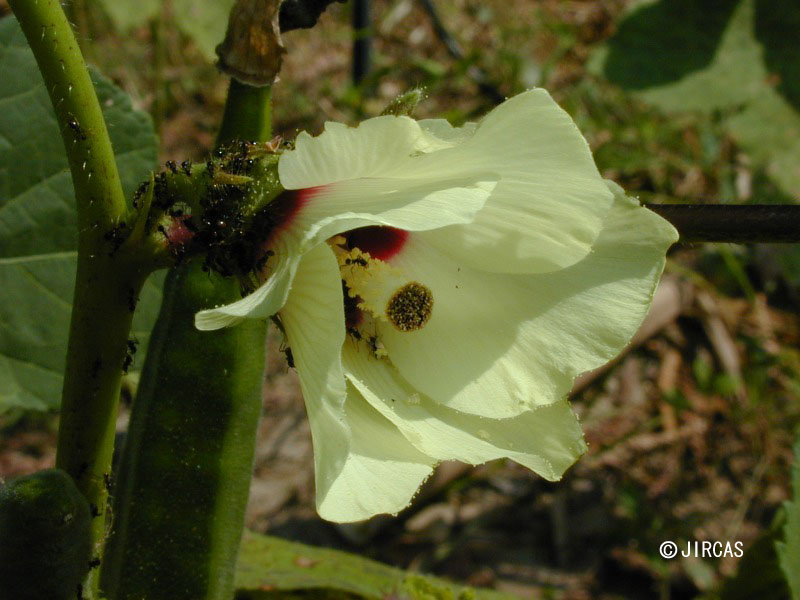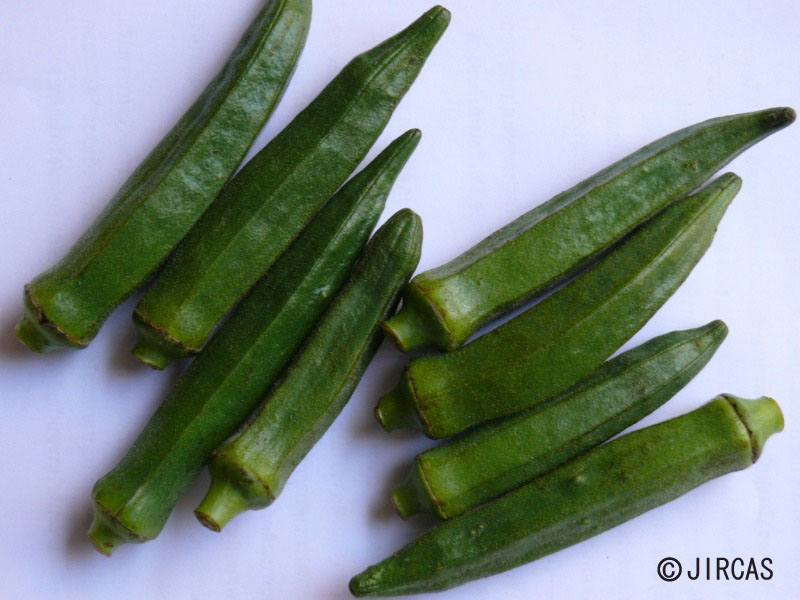Abelmoschus esculentus (L.) Moench (Malvaceae)
- Scientific name
- Abelmoschus esculentus (L.) Moench
- Family name
- Malvaceae
- Common name
- Okra (English); okura (Japanese)
- Local name
- Krachieb khieo, krachieb mon
Robust, erect annual herb, up to 2.5 m tall. Leaves simple, spirally arranged, lamina 20–50 cm in diameter, 3–7-lobed. Petiole up to 50 cm long, stipules filiform, c. 15 mm long, often split to the base. Inflorescence a solitary flower in leaf axil or pseudoraceme through reduction of upper leaves. Flowers 5-merous, yellow, bisexual; pedicel c. 2 cm long. Epicalyx 7–15, free, linear, 5–25 × 1–3 mm. Calyx spathaceous, 2–6 cm long, adnate to and falling with corolla. Corolla free, obovate, yellow with dark purple throat. Fruit a cylindrical to pyramidal capsule, 5–20 cm long, 1–3 cm in diameter; stalk up to 7 cm long, greenish purple or completely purple when young. Seeds globose, 3–6 mm in diameter, black.
Various local landraces are cultivated by villagers. Propagated by direct seeding at a spacing of 25 × 50 cm during the mid- or late rainy season. Thrives on well-drained soil in open shade. Fruits are harvested within 2 months, varying by cultivar.
Young fruits are eaten raw or cooked by steaming, boiling, or blanching and served with nam phrik (dipping sauces) . Rarely, young fruits are added to sweet and sour curries.
Young fruits are eaten raw or cooked by steaming, boiling, or blanching and served with nam phrik (dipping sauces) . Rarely, young fruits are added to sweet and sour curries.





